Dynamic doppelganger: Developing Florida’s Digital Twin
University of Florida researchers are virtually replicating Jacksonville
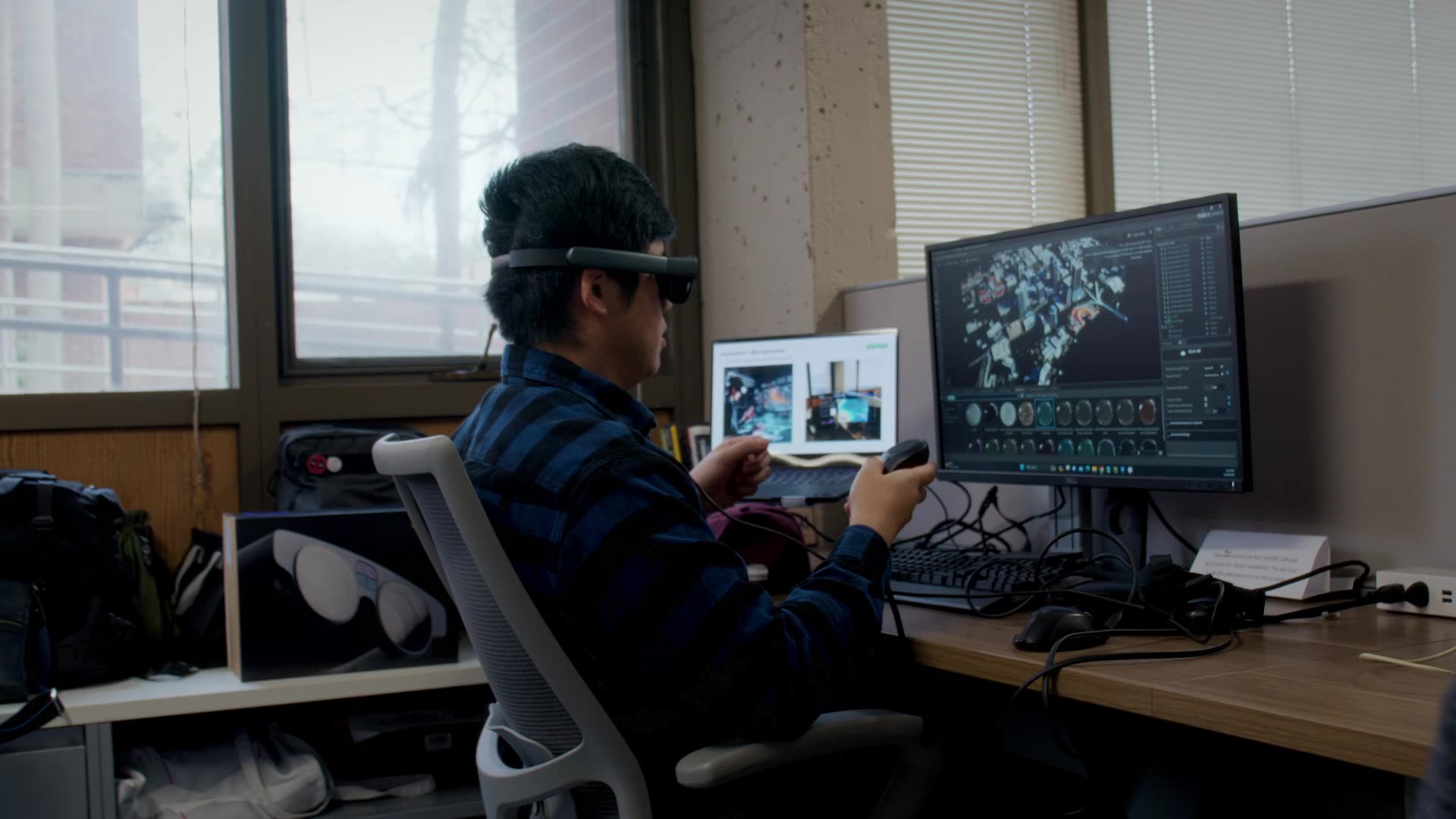
The University of Florida is leading a project that will leverage artificial intelligence and digital twin technologies to enhance everyday life for Jacksonville residents. By building a virtual model of a section of the city, UF researchers will be able to test future land use and climate scenarios and visualize infrastructure investments. This information can help decision makers see the potential real-life impacts on the lives of residents, helping city planners adapt to changing conditions. And the Jacksonville pilot may be just the beginning.
Implementing a UF strategic initiative
Florida faces an aging infrastructure, a changing environment, and rapid population growth. Digital twin technologies can help decision makers make data-driven choices to sustain Florida’s natural resources, protect the community’s health and well-being, ensure economic prosperity, and enhance the benefits of future urban planning projects.
As the state’s flagship land-grant university, UF saw an opportunity to capitalize on its research capabilities to benefit the state of Florida. In 2023, UF President Ben Sasse allocated $1.75 million in strategic funding from the Florida Legislature toward building Florida’s Digital Twin. The project aims to fully harness digital twin technologies and AI to deliver the best science and data available to plan for uncertain scenarios.
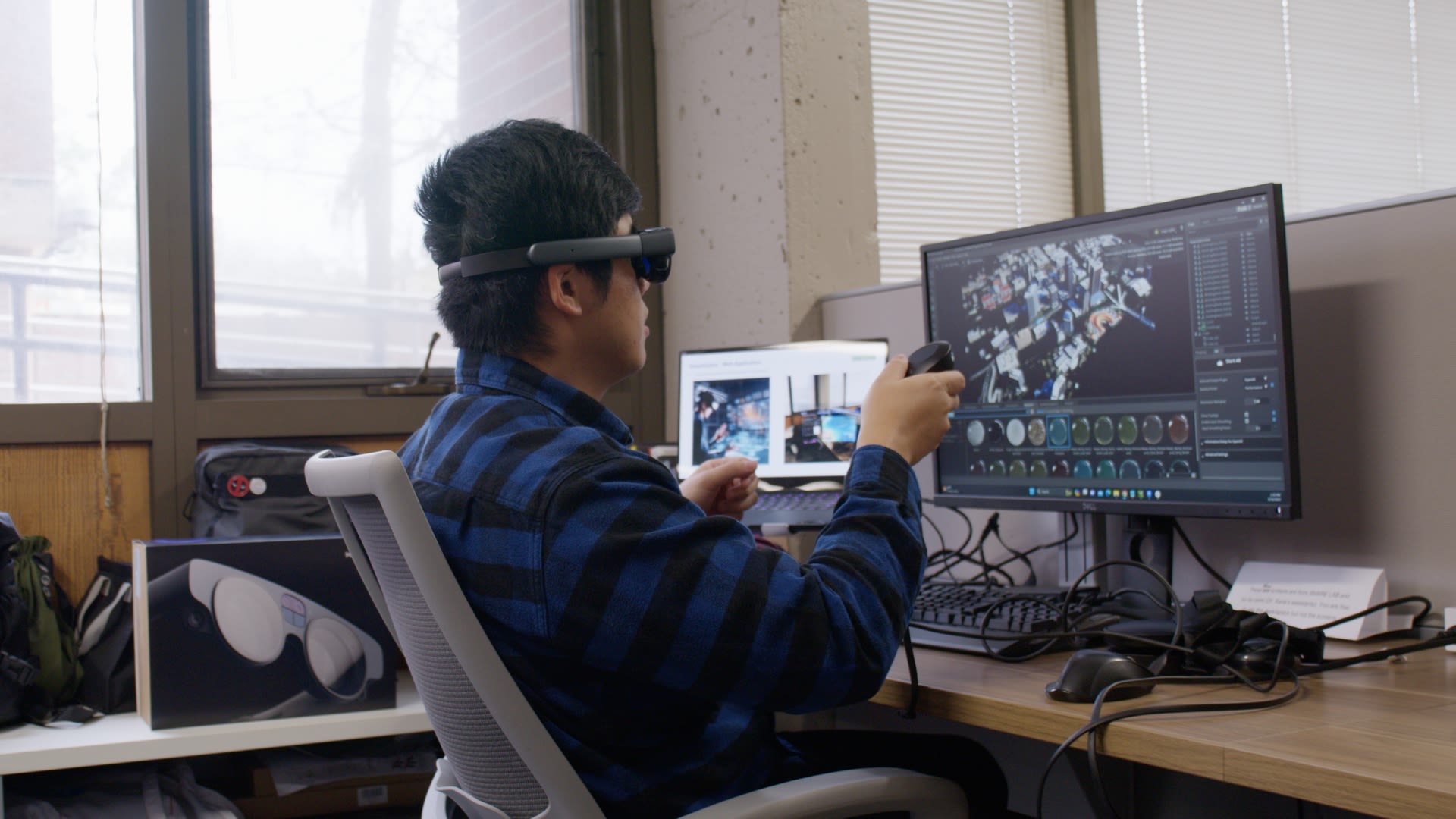
Building Florida’s Digital Twin
Florida’s Digital Twin project is led by Christine Angelini, Ph.D., an associate professor and director of the UF Center for Coastal Solutions. Using Jacksonville as a pilot, the digital twin will show details from buildings and roads to wastewater infrastructure. Jacksonville was chosen to kickstart this project due to relationships between researchers at UF Health and a network of local stakeholders.
UF has what it takes to build digital twins, like experts in AI disciplines, a partnership with the AI tech company NVIDIA, the fastest supercomputer in U.S. higher education, HiPerGator, and access to big data on Florida’s environmental, health, and infrastructure systems.
The project stemmed from a meeting among leaders of different units across UF’s campus.
“We realized that as an institution, we have interdisciplinary breadth and depth, but we’re not channeling that expertise to deliver as much of an impact to the state of Florida as we possibly can,” Angelini said.
The project involves collaboration from members of the University of Florida’s Herbert Wertheim College of Engineering; College of Agricultural and Life Sciences; College of Medicine; College of Journalism and Communications; College of Design, Construction and Planning; UF Research; and UF Health.
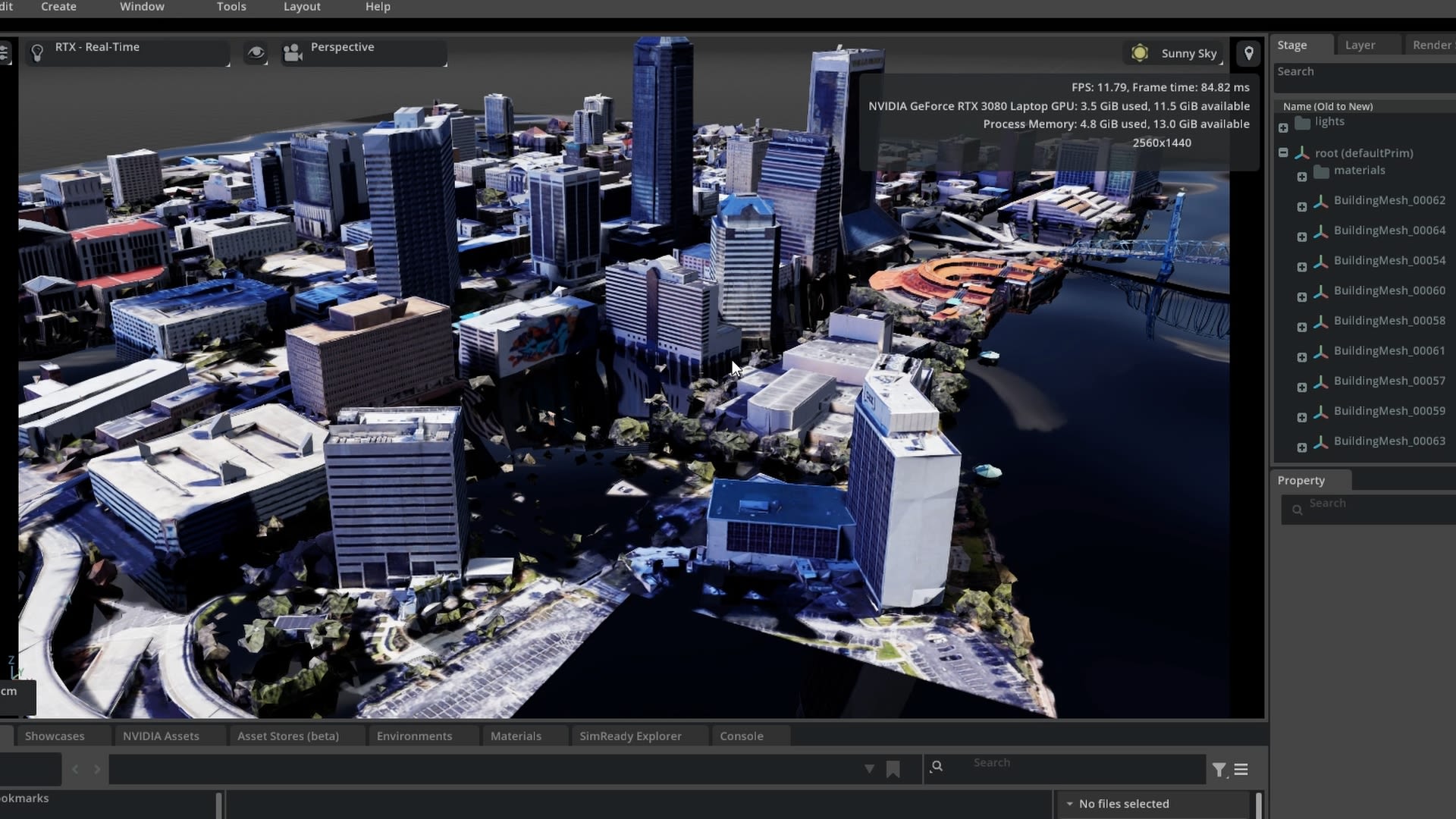
A simulation screenshot of a digitally flooded city"
A simulation screenshot of a digitally flooded city"
Visualizing a virtual Jacksonville
One way that users will be able to interact with the Jacksonville digital twin is through an augmented reality headset. Residents and urban planners will be able to see rich information about their neighborhood in front of them, allowing for an immersive experience unlike screen displays. The research team is now working to enable the AR headset to display the simulated effects of flooding. The information that is revealed from this visualized simulation of the real-life physical environment can help city planners develop more cost-effective, efficient, and sustainable long-term infrastructures.
Karla Saldaña Ochoa, Ph.D., is an assistant professor in the School of Architecture at the University of Florida and director of Spatial Human-Centered Artificial Intelligence Research and Experimentation Lab, a research group centered on developing projects leveraging interactions between AI and human intelligence to boost creativity in architectural design. Saldaña Ochoa wants to have a greater understanding of what is happening to Florida’s environment while making digital twin technology accessible to users from academia, industries, decision makers, and the community.
“We have access to one of the fastest supercomputers in the United States, which can host all the multi-model data needed to create a digital twin, such as water simulation, a 3D built environment, and health data. We want to find a way to visualize data from the web interface into Omniverse using the AR goggles: an augmented reality experience,” said Saldaña Ochoa when describing the AR aspect of the project.
In addition to the AR perspective of the Jacksonville digital twin, other UF researchers are working to scale the city down into a series of 3D neighborhoods to be added to a web-faced interface.
Building an interface of Jacksonville’s neighborhoods while trying to adapt to climate change was the perfect challenge for Jeff Carney, an associate professor in the School of Architecture at the University of Florida and director of the Florida Institute for Built Environment Resilience. Carney’s experience researching the role of architecture and city planning in building resilience aligns with the Jacksonville digital twin’s ability to assess flood risks and measure future impacts.
“There’s the impact of storms and floodwater on the buildings and streets today, but what will the impact of the flood look like in six months? What’s the impact on the health of the residents two, three, or five months after a storm? I think some of those questions will be interesting to explore with the digital twin,” said Carney, describing how researchers can use their findings to help Floridians.
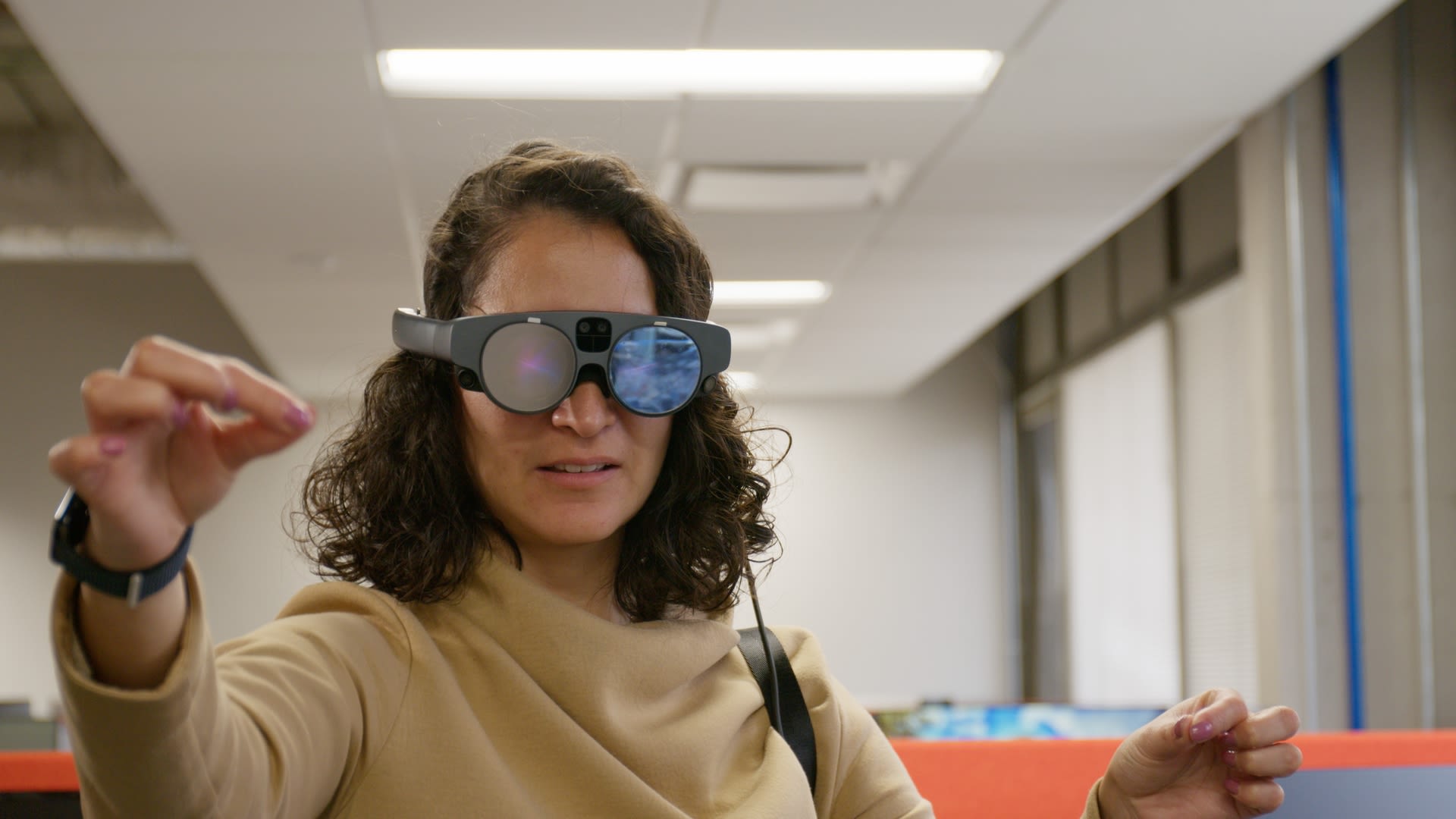
Advancing AI and digital twins at UF
In addition to Florida’s Digital Twin project, researchers at UF are exploring additional applications of digital twin technology, particularly to enhance patient care.
Azra Bihorac, Ph.D., director of the Intelligent Clinical Care Center and a leading figure in medical AI research at UF Health, is pioneering the application of digital twins in the health care sector. Bihorac focuses on using digital twins to minimize patient stress and improving health care efficiency and training. One goal is to provide virtual experiences to patients from the comfort of their own home.
“When a patient comes in for surgery, they can visit the space ahead of time,” Bihorac said. “They can go through the operating room and see where they’ll be residing after their surgery. They can even interact with an AI agent as proxies of our doctors and nurses.” Creating virtual experiences aims to minimize stress and anxiety associated with some health care experiences.
Developing a digital twin model for an intensive care unit is a critical step toward realizing the potential for virtual medical experiences. By creating a virtual replica of an ICU, researchers can gain deep insights into patients’ needs and preferences. This allows for rigorous testing and refinement of care scenarios in a simulated environment before they are introduced in real-life settings, with a goal of ensuring a higher level of preparedness and patient care.
With high mortality rates, life-or-death situations can come down to a matter of seconds. With such a small margin for error, an ICU digital twin provides a virtual environment where groundbreaking AI research can be crucial to not only progressing patient care but also to saving lives.
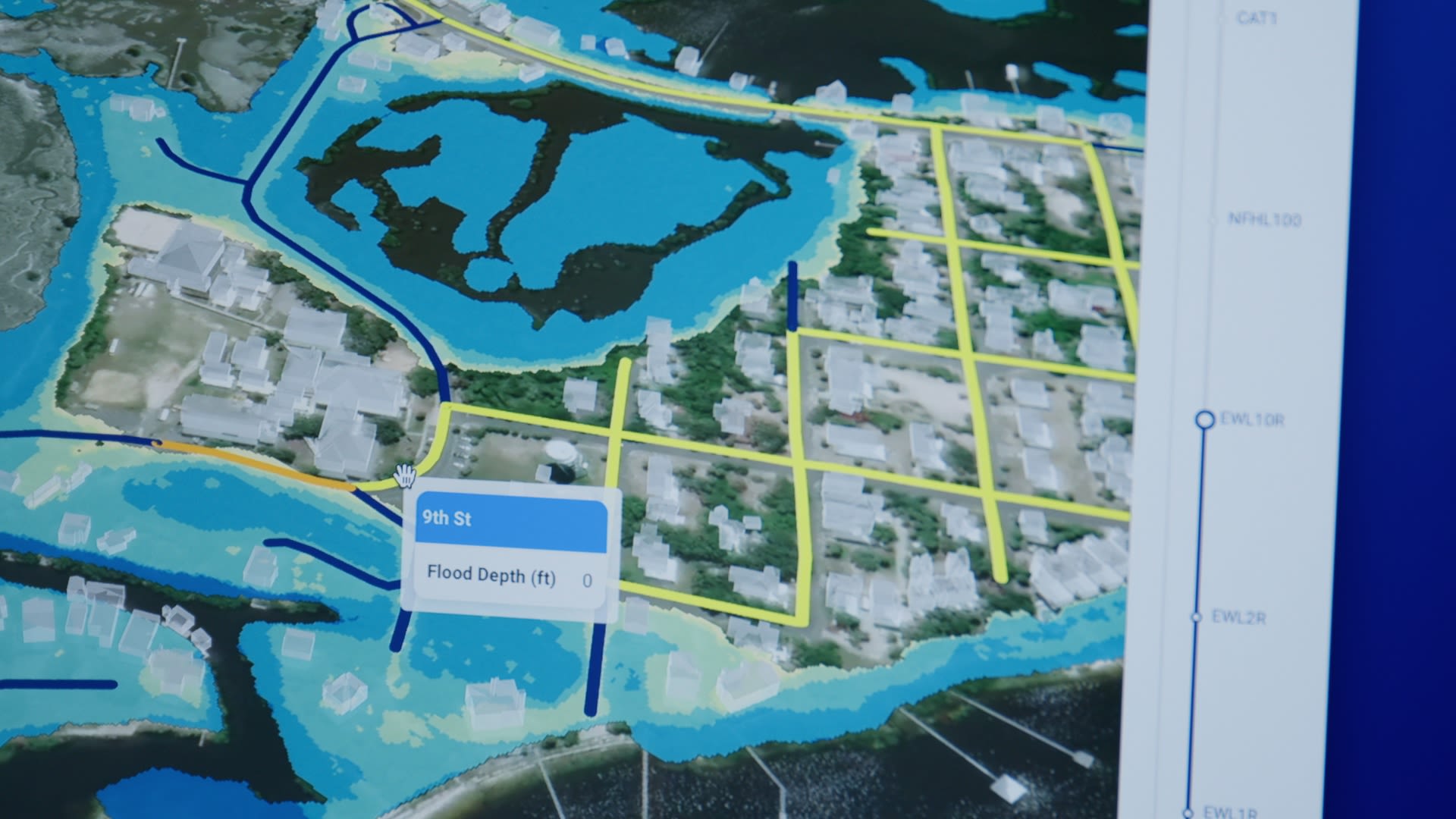
Digital twins and the future of Florida
As these projects continue to evolve, UF researchers will use the information from digital twin technologies to enhance scientific discoveries and bring value in the form of decision-making support and optimization across Florida’s conservation, economy, and public health systems.
These technologies hope to offer citizens and elected officials the ability to make better decisions for the future. Strategic initiatives like the Florida Digital Twin and virtual ICUs continue to establish UF as a leading AI research university while working to provide structured, sustainable resources that can have a positive impact on the state.
This content was paid for and created by University of Florida. The editorial staff at The Chronicle had no role in its preparation. Find out more about paid content.



